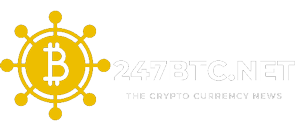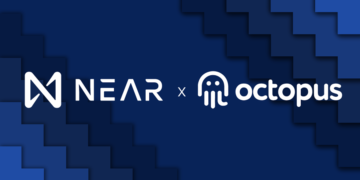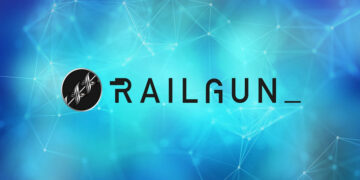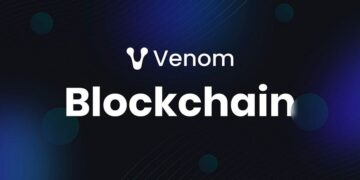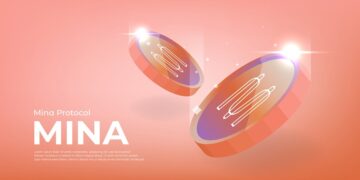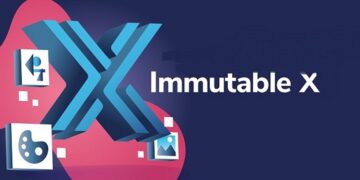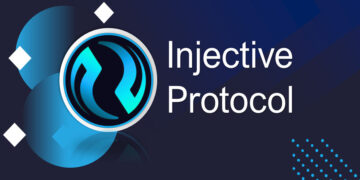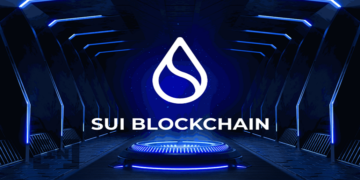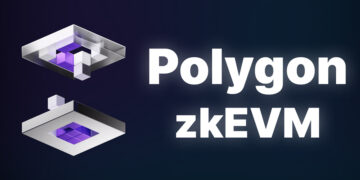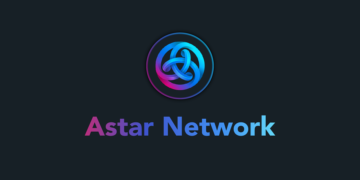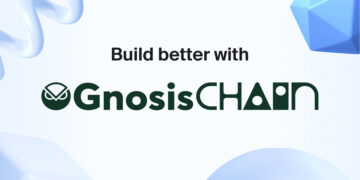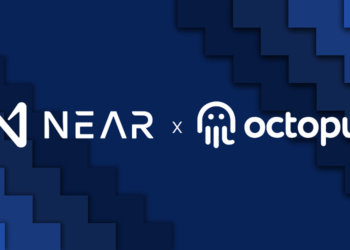What is Optimism Blockchain ? It is a layer 2 project for Ethereum that comprises of three primary components: Ethereum mainnet, Optimistic Rollup, and OVM. Those looking to learn more about the OP token can do so by following this link.
Table of Contents
ToggleWhat is Optimism Blockchain ?
Optimism Blockchain is a Layer 2 scaling solution for Ethereum that aims to reduce gas fees and increase transaction speeds, leading to a smoother user experience while maintaining the security of the Ethereum mainchain. It is a part of the Optimistic Rollup ecosystem, which utilizes fraud proof mechanisms for ensured security.
In simple terms, it can be stated that the transactions of the parties concerned shall be deemed legitimate and approved provided they cannot be substantiated as fraudulent.
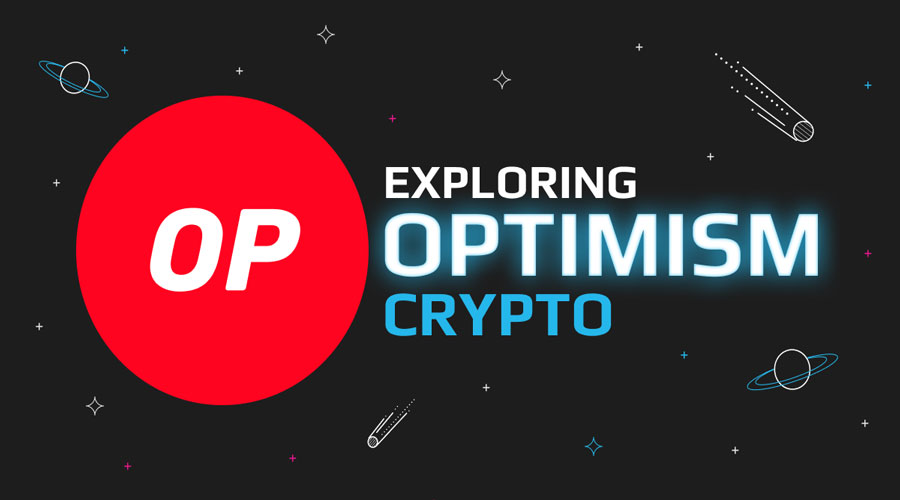
The name “Rollup” originates from the process of segregating transactions from the main chain, consolidating them into a single batch and generating proof, followed by uploading onto Layer 1, analogous to rolling up the transactions. To be specific, Optimism is a layer 2 consisting of three primary components. This statement is presented in a formal tone and provides informative style.
- Ethereum mainnet: Optimism’s Layer 1 native security platform.
- Optimistic Rollup: Core to Optimism’s scalability.
- Optimistic Virtual Machine (OVM):The virtual machine, OVM, is compatible with Ethereum which enables projects to operate as if they were on L1 Ethereum. OVM is a smart contract running environment of Ethereum and can be considered a better scalable EVM. It is capable of processing a large number of smart contracts simultaneously at a given time.

The salient feature of Optimism
Given the aforementioned characteristics, noteworthy attributes of Optimism’s Blockchain comprise:
- The trading experience on our platform is accompanied by expedited processing times and a substantial reduction in gas fees. In comparison to Ethereum’s current gas fees, our platform features an 88-fold decrease in gas fees.
- With convenience in mind for the expansion, scaling, and deployment of Dapps, our platform offers full EVM support. This means that Dapps built for Ethereum or other EVM-compatible ecosystems can be easily executed on our layer 2 platform with just a few lines of code.
- The security level of Layer 1 Ethereum has been maintained in Layer 2, ensuring the same strict security standards are upheld.
Optimism Collective, Token House and Citizens House
The latest version of Optimism has introduced the Optimism Collective, which is a decentralized autonomous organization (DAO) designed to promote rapid and sustainable development of a decentralized ecosystem through digital democracy. The Optimism Collective has a large-scale governance system that is aimed at democratizing decision-making processes. Moving forward, the management of Optimism will be a collaboration between the Optimism Foundation and the members of the Optimism Collective.

The Optimism Collective will be governed by two institutions, namely the Citizen’s House and the Token House, which share a similar structure to that of the parliament.
- Token House: OP token was established during the initial release of Airdrop #1, where the first individuals who actively engaged in community participation by voting for protocol updates and selecting projects to receive incentives were given the authority.
- Citizen’s House: The main purpose is to create conditions and manage the process of distributing funding for useful public goods projects within the community, determining the allocation of funds for community-building projects to benefit the common good. The citizenship rights will be conferred through non-fungible tokens that cannot be transferred. Further details on Citizen House will be revealed in due course.
Based on the aforementioned ideas, the economic framework of OP is projected to possess a flywheel in the following manner:
- Demand for OP Blockspace: The source of capital for the OP economy will originate from the Optimism network and its voluminous spatial value. Participating in this spatial value will result in a reliable source of revenue for businesses.
- Sequencer generates revenues: The Sequencer is a node responsible for processing transactions on L2 and forwarding them to L1. Similar to miners, the Sequencer earns a portion of the revenue in the form of transaction fees.
- RetroPGF: The revenue generated from the sequencer will be redistributed to the community via the Retroactive Public Good Funding program. This program involves allocating funds and providing monetary rewards to individuals, projects, and communities that have made positive impacts or contributions to the wider community. The members of Citizen’s House will act as voting members to determine the allocation of these funds.
Value for Builders and Users:
- Users: It is expected that regular airdrops will be received from OP, as well as from projects that are eligible for incentives sponsored by the OP ecosystem and the Retro program.
- Builder: By receiving direct incentives from the Retroactive program, selected projects will provide tools, applications, and infrastructure that can aid other projects in building their own.

The advantages of holding the OP token ( Optimism Blockchain )
Currently, information regarding the use cases of the OP token remains limited. According to the announcement from Optimism, the OP token serves as the primary currency within the Token House, predominantly utilized for administration purposes such as:
- Vote for protocol updates.
- Vote for the distribution of incentives for projects from a part of the Governing Fund.
- Project funding on Optimism.
- Participate in project management with OP Citizens.
A comprehensive overview of the OP Token is available, containing detailed information
Key Metrics OP
- Token Name: Optimism (OP) Token
- Ticker: OP
- Blockchain: Optimism
- Token Standard: ERC-20
- Contract: 0x4200000000000000000000000000000000000042
- Token Type: Governance
- Total Supply: 4,294,967,296 OP
- Initial Supply: 234,748,364 OP
OP Token Allocation
- Ecosystem Fund: 25%
- Retroactive Public Goods Funding (RetroPGF): 20%
- User Airdrops: 19%
- Core Contributors: 19%
- Sugar Xaddies: 17%
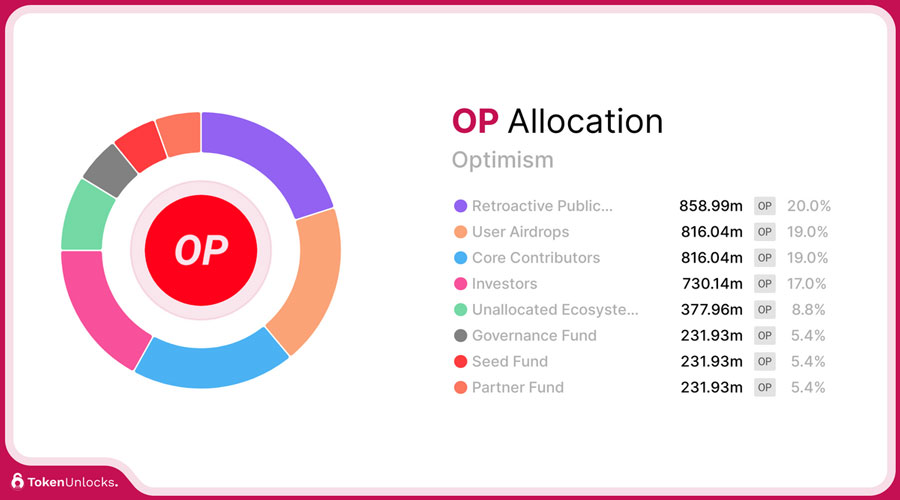
More specific:
Ecosystem Fund:The Optism Program aims to promote development within the ecosystem by funding various projects and communities. Specifically, the Ecosystem Fund will be divided into multiple segments to better allocate resources.
- Governance Fund (5.4%)
- Partner Fund (5.4%)
- Seed Fund (5.4%)
- Unallocated (8.8%)
Retroactive Public Goods Funding (RetroPGF): Citizens of the House are responsible for deciding on Retroactive Public Goods Funding (RetroPGF). The RetroPGF rounds are scheduled on a quarterly basis to award equitable rewards to projects that positively impact the ecosystem.
Users Airdrops: Optimism and Ethereum’s community has initiated a user airdrop event that awards members of the community. This event will not only consist of Airdrop #1, but additional drops such as #2 and #3 will take place in the future.
Core Contributors: For the individuals who have contributed significantly to bringing the Optimism Collective from its conceptualization to its actualization and will continue to contribute to the protocol, a specific amount of tokens will be locked for a predetermined period of time. These individuals are recognized as the core contributors to the project.
Sugar Xaddies: Optimism’s Sugar Xaddies will also be subject to a lock-up period to cater to the interests of the investors.
OP Token Release Schedule
The initial total supply of tokens for OP will be 4,294,967,296, with an expected annual inflation rate of 2% applied to the total token supply.
According to the Theo Token Allocation, the Optimism Foundation is accountable for managing and distributing 64% of the tokens among the community.
During the first year, 30% of the total initial supply will be allocated to the Foundation for distribution to the community, with subsequent ratios to be determined by token holders through voting. This decision-making process allows for equitable and transparent distribution of tokens, ensuring the long-term sustainability and growth of the project.
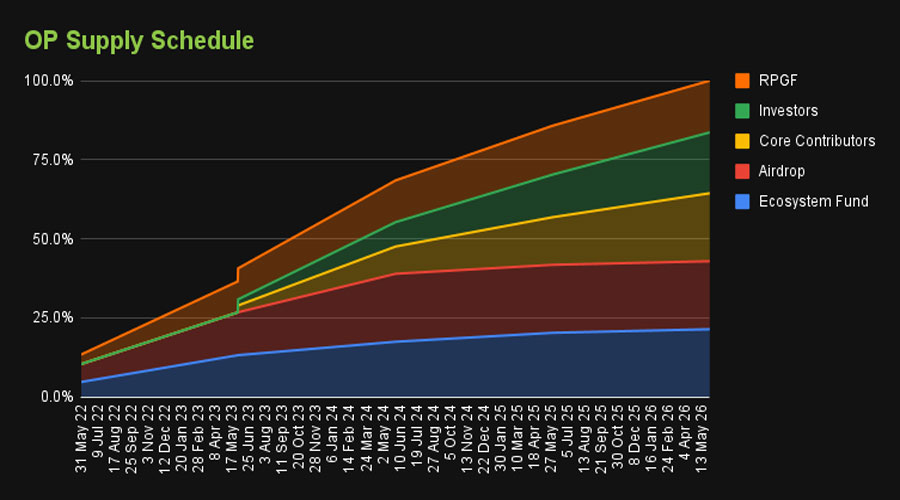
OP Token Usecase
Currently, OP tokens are mainly used in Token House with governance tools such as:
- Vote for protocol updates.
- Vote for the distribution of incentives to projects from a portion of the Governing Fund.
- Project funding on Optimism.
- Participate in project management with OP Citizens.
Although this Tokenomics model has received support from Vitalik and the Ethereum Foundation, it has also sparked some controversy within the Optimism community. If Layer 2 tokens such as OP are not used as gas fees, what advantages do they have compared to other tokens in the market? If there is no demand from users, then what is the motivation for growth?
In reality, the Optimism forum once proposed the use of OP as a gas fee for Optimism instead of OP. However, Vitalik opposed this proposal, citing that Optimism has larger goals beyond driving up the price of OP.
Furthermore, in the scenario where a user pays for gas with OP but transaction validation occurs on Ethereum, Optimism is required to sell OP in exchange for ETH to cover gas fees – leading to unintentional selling pressure for OP. Vitalik further advises that sustainable development for Optimism requires prioritizing the benefits of genuine users rather than token speculators. This emphasizes the importance of catering to the needs and interests of actual users to ensure long-term growth and success for the platform.
OP token exchange
Currently OP has been listed on many major exchanges, you can buy and sell OP at:
- CEX: Binance, Kucoin, Coinbase,…
- DEX (on the Optimism ecosystem): Uniswap v3.
Project team, investors, partners
Project team
In order to achieve the aforementioned objectives, the Optimism Foundation has been established to manage the Optimism Collective. Its main role is to oversee experiments, promote the ecosystem, and ultimately dissolve and hand over complete governance to the community. This strategic move empowers community members to take ownership and responsibility for the project’s management and growth.
The Optimism Foundation will be led by its two founders, Jinglan Wang and Ben Jones, who will be joined by Eva Beylin, the Director of the Graph Foundation, Abbey Titcomb, the Head of Community at Radicle, and Brian Avello from Maker Foundation. This esteemed team will guide the Optimism Foundation towards its goals with their expertise and experience in relevant domains.
Furthermore, it is noteworthy that Optimism PBC has undergone a renaming process to now be referred to as OP Labs PBC. It is crucial to mention that Liam Horne, who previously served as the Head of Technology at Optimism PBC, will now be assuming the new position of CEO at OP Labs PBC.

Developed by Optimism by some prominent individuals such as:
- Co-Founders: Jinglan Wang and Ben Jones
- Eva Beylin is the Director of the Graph Foundation
- Abbey Titcomb is now Radicle community development team
- Brian Avello from Maker Foundation
Investors
The latest project recently secured a funding of 150 million USD from the Serie B round led by a16z and Paradigm, in addition to earlier funding rounds.
- January 15, 2020, Seed Round ($3.5 million): Paradigm, IDEO Colab Ventures
- February 24, 2021, Series A ($25 million): Andreessen Horowitz, Paradigm, IDEO Colab Ventures
- March 17, 2022, Series B ($150 million): Paradigm, Andreessen Horowitz. The current valuation is $1.65 billion.
Partner
Optimism ranks among the top two standout expansion solutions of Ethereum, leading to the emergence of several active projects on its ecosystem that cover various areas such as DEX, AMM, Lending, Bridge, and more.
Roadmap & Updates
The project has achieved significant milestones in 2021, including the release of Alpha Mainnet at the beginning of the year, followed by the official Mainnet release at the end of the year, and the successful completion of the EVM virtual machine.

- June 2019: Introducing Optimistic Rollup
- October 2019: Launched Optimistic Rollup Testnet
- September 2020: EVM compatible testnet
- January 2021: Alpha Mainnet
- October 2021: EVM-compatible mainnet
- 12/2021: Mainnet version open to the community
- April 27, 2022: Introduced a new governance model called Optimism Collective, which includes both Token House and Citizens House. Currently Optimism Collective is being managed by the Optimism Foundation but will be given to the community in the future.
- 4/5/2022: Announcing an ecosystem development fund worth 231 million OP (equivalent to 5.4% of total supply) for many bluechip projects in the ecosystem.
- May 19, 2022: Introducing Bedrock, this is a technology that helps optimize speed and costs on Optimism (similar to Arbitrum Nitro).
October 18, 2022: Introduce OP Stack to become Superchain (similar to Appchain).
December 7, 2022: Announced Citizens’ House and announced the 2nd Incentive with a value of 10 million OP. - 2022: New Generation of Fraud Proofs
- 2023: Applying Sharding technology to Rollup
- 2023: Encourage verification
- 2023: Decentralized Sequencer
- 2024: Evidence of Fraud Managed on L1
Ecosystem Overview Optimism
Together with Arbitrum, Optimism has emerged as one of the top two robust Layer 2 ecosystems in the current market, encompassing a variety of different components such as: [list the components here]. The diversity of its integrations and innovations highlights the strength and appeal of these Layer 2 solutions for scaling blockchain networks.
- DEX: Velodrome, Uniswap, Curve Finance, Beethoven X, KyberSwap, 1inch, SushiSwap,…
- Lending & Borrowing: AAVE, Sonne Finance, QiDAO, dForce,…
- Derivatives: Synthetix, Perpetual, Lyra, Kwenta, Pika Protocol, Mummy Finance, Premia,…
- Yield Farming: Beefy, Arrakis Finance, Reaper Farm, Pickle Finance,…
- NFT & Gaming: Backed, BlueSweep, Bored Town, Aethernity, Apetimism, Dope Wars, Dragonia, Mintplex, Gladiaxy, Ganland, Geo Web,…
- Bridge: Stargate, Hop Protocol, Synapse Protocol, Across, Beamer, Biconomy Hyphen, Bungee Finance, Celer Network, Celer Network, Li Fi Finance, LayerSwap,…
- Wallet: Rainbow, Coin98 Wallet, Bridge Wallet, Fox Wallet, Cwallet, Taho, Coinbase Wallet, Metamask, Rainbow,…
- Some other pieces: dHEGDE, Pool Together, Gamma Strategicts,…
At present, it can be claimed that Optimism’s ecosystem is experiencing a relatively strong growth compared to the overall landscape of Layer 1 and Layer 2 markets.
Overall, the Optimism project demonstrates proficiency in establishing a strong foothold within the Crypto market. Despite facing fierce competition from other Layer 2 projects, Optimism has adeptly implemented various strategies to attract users.
What is Octopus Network (OCT) ? A comprehensive overview of the OCT cryptocurrency
The NEAR Protocol currently hosts an immensely significant project for its ecosystem, which regrettably has yet to garner the attention...
Read moreWhat is Ripple ( XRP coin )? An general introduction to the Ripple coin
Bitcoin is the largest digital currency in the world, with a limit of 21 million units, and it is well-known...
Read moreWhat is Railgun crypto (RAIL)? Consider comprehensive information about the RAIL token
The importance of privacy and security has increased significantly in the field of cryptocurrency as it continues to develop. Several...
Read moreWhat is Venom Network? It is the first blockchain to be monitored by the UAE regulatory authorities
What is Venom? Venom Network is the UAE's (United Arab Emirates) first Blockchain project initiated by the International Financial Center....
Read moreWhat is Mina Protocol (MINA)? Complete set of cryptocurrency MINA Token
The blockchain platform, Mina, has garnered significant attention from users for a considerable period, having been sold on Coinlist. Furthermore,...
Read moreWhat is Immutable X (IMX)? IMX Cryptocurrency Complete
Recently, due to the rapid development of new trends such as NFTs, Play-to-earn, and Metaverse, the Ethereum blockchain network increasingly...
Read moreWhat is Injective Protocol (INJ)? All you need to know about INJ coin
Injective was initially introduced in October 2020 as a cross-chain protocol. Since June 2021, the project has evolved into a...
Read moreWhat is Sui Crypto? Details About SUI Token
The emergence of Sui blockchain has brought forth a new generation of blockchain technology. Its groundbreaking features and notable advantages...
Read moreWhat is Polygon zkEVM? Layer 2 zkEVM is a class rival of zkSync
On March 27, 2023, Polygon zkEVM was officially launched on Mainnet Beta, joining the ranks of other prominent Layer zkEVM...
Read moreWhat is StarkNet Crypto? StarkNet Ecosystem Overview
Inquiring about the ecosystem of StarkNet crypto, we seek information on its various components and current development phase. Furthermore, we...
Read moreWhat is Astar Network & Shiden Network? Complete set of ASTR, SDN Token
This article will provide comprehensive information on Astar Network and Shiden Network, including their prominent features and tokenomics details of...
Read moreWhat is Gnosis Crypto (GNO)? Complete set of GNO Cryptocurrency
What is Gnosis Crypto (GNO)? This article provides comprehensive and valuable information regarding the digital currency Gnosis (GNO) for individuals...
Read moreWhat is Moonbeam Crypto? Complete set of GLMR & RIVER Cryptocurrencies
Moonbeam is a smart contract platform that has been built and developed to work compatibly with EVM on Polkadot. It...
Read moreWhat is Flow Crypto? Detailed information about FLOW token
In 2017, CryptoKitties, an NFT game on the Ethereum platform, experienced explosive growth that resulted in a sharp increase in...
Read moreWhat is Cardano ( ADA coin ) ? The complete information regarding the ADA coin
The Cardano platform is a blockchain program that provides smart contracts for the development of dApps. With its associated ADA...
Read more